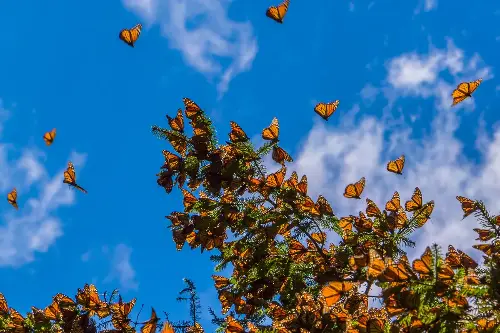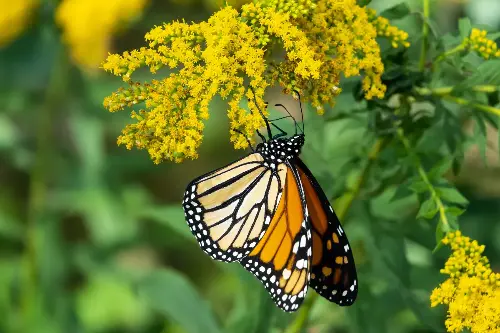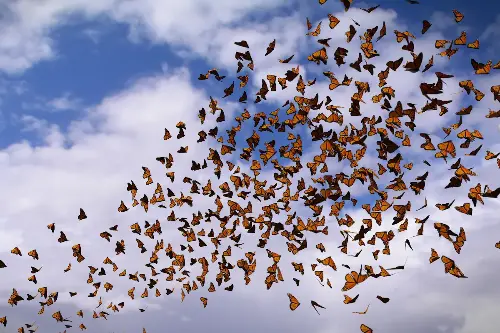When we think of grand migrations, our minds tend to conjure images of wildebeest thundering across the African savanna or monarch butterflies fluttering en masse to distant climes. Indeed, these are some of Earth's most awe-inspiring journeys, yet they are but a fraction of nature's migratory marvels. Equally remarkable, though often less heralded, are the odysseys undertaken by the smallest of aviators: insects.

Insect migration is as varied as the species themselves, and it defies the constraints of size and stature. It is the painted lady butterfly, not its more famed cousin the monarch, that holds the record for the longest migration of any insect. These tiny voyagers travel an astonishing 12,000 kilometers, from tropical Africa to the Arctic Circle—a feat that challenges our understanding of endurance in the animal kingdom.
The monarch butterfly, nonetheless, remains one of the most captivating of insect migrants. Every year, North American monarchs embark on a journey of up to 4,000 miles, navigating with an innate compass that guides them to their wintering grounds in the mountains of Mexico. Here, they congregate in colossal numbers, covering the oyamel fir trees in a living mosaic of orange and black—a spectacle that draws visitors from around the globe.

But why do these and other insects undertake such perilous treks? The reasons are multifaceted, but they often revolve around survival—be it avoiding unfavorable climates, finding food, or securing breeding grounds. The black cutworm moth, for example, migrates to avoid the cold, traveling from the southern United States to Canada and back again. These migrations, driven by the change of seasons, ensure the moth’s life cycle can continue.
One might wonder how these minute creatures navigate across continents and oceans. The answer lies in an extraordinary set of adaptations and instincts. Many migrating insects rely on a sophisticated use of environmental cues, including the sun’s position, polarized light patterns, and even the Earth’s magnetic field. Some, like the desert locust, can go further, altering their physiology and behavior based on population density, which can trigger their mass migration and lead to the formation of enormous swarms.
Humankind has much to learn from these tiny travelers. Researchers have discovered, for instance, that the dragonfly, specifically the globe skimmer or wandering glider, undertakes an epic multi-generational migration that spans the Indian Ocean. Unlike monarchs, globe skimmers breed and die en route, and their offspring continue the journey—an astonishing strategy that ensures their species’ survival across generations.
Climate change, however, poses new and daunting challenges to these age-old migrations. Changes in temperature and weather patterns can disrupt the tightly coordinated timing of life cycles and migratory patterns. Insects that once relied on the emergence of specific plant species for sustenance may find their food sources out of sync with their migratory schedules. Moreover, habitats that once served as critical waypoints or destinations for migratory insects are increasingly under threat from human activity and environmental degradation.

Yet amidst these challenges, there are efforts to aid our diminutive globe-trotters. Conservationists are creating "insect highways"—corridors of habitat rich in the food and resources insects need to survive their journeys. Planting milkweed and other native flora can provide monarch butterflies with much-needed fuel and breeding grounds along their migratorial paths. Such initiatives not only benefit the insects themselves but also contribute to the health of ecosystems worldwide.
As we continue to learn more about these extraordinary insects and their voyages, we gain valuable insight into the complexities of migration and the resilience of life. Migrations are not just spectacles of nature; they are intricate dances of survival, interwoven with the fabric of ecosystems and the changing climate. By understanding and harnessing this knowledge, we have the opportunity to ensure that the skies remain filled with the fluttering wings of these minuscule, yet monumental, adventurers.
In embracing the wonder of insect migration, we see more than a marvel of nature; we embrace a critical component of our planet's biodiversity. It's an astonishing reminder that even the smallest of Earth's creatures can embark on journeys that rival the greatest of our own, and in doing so, remind us of the interconnectedness of all life.
